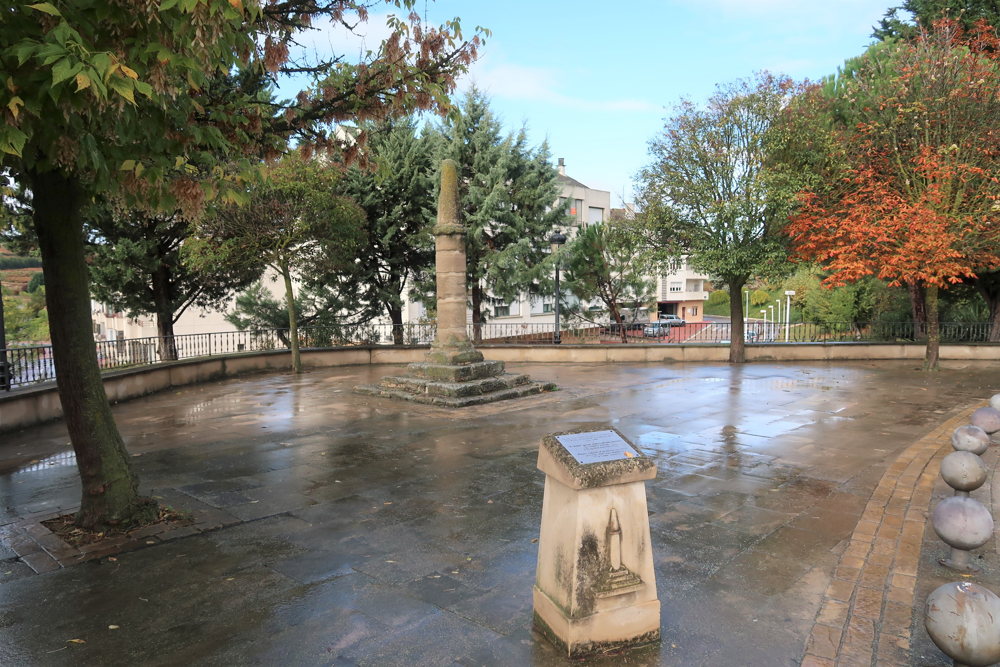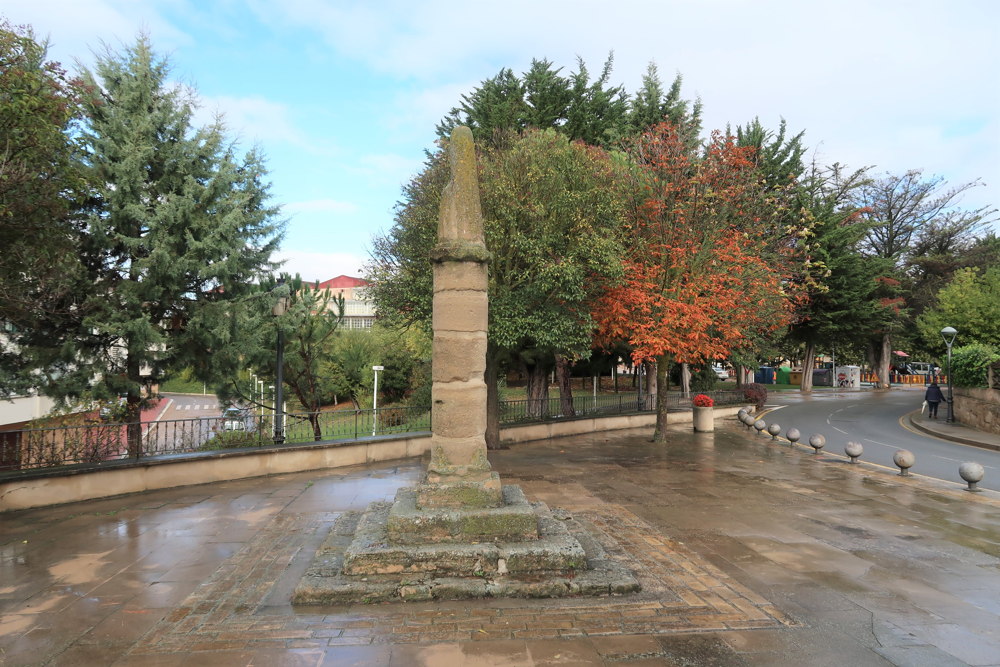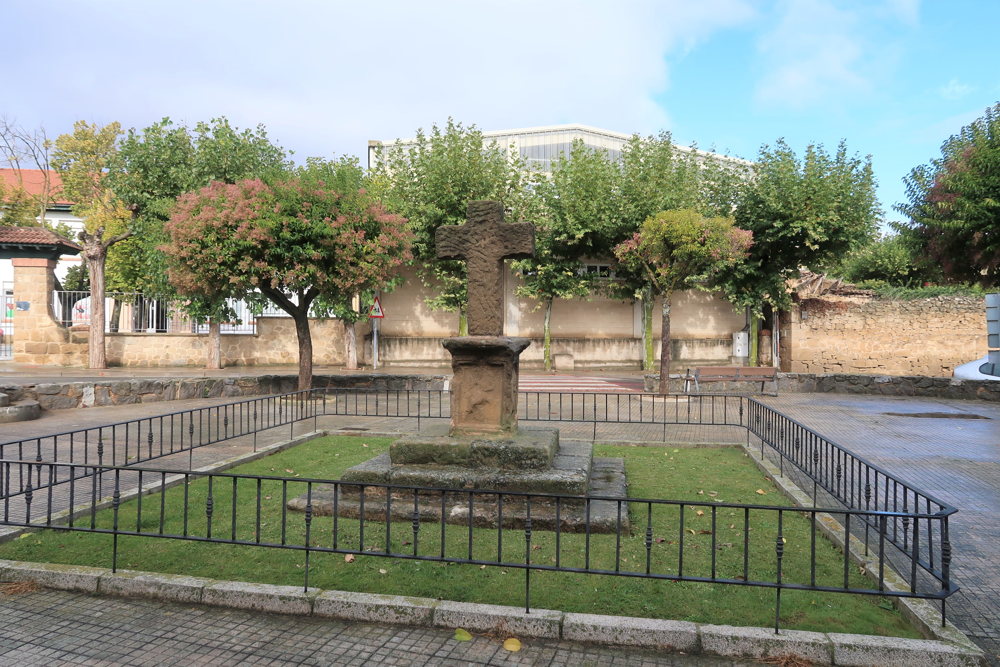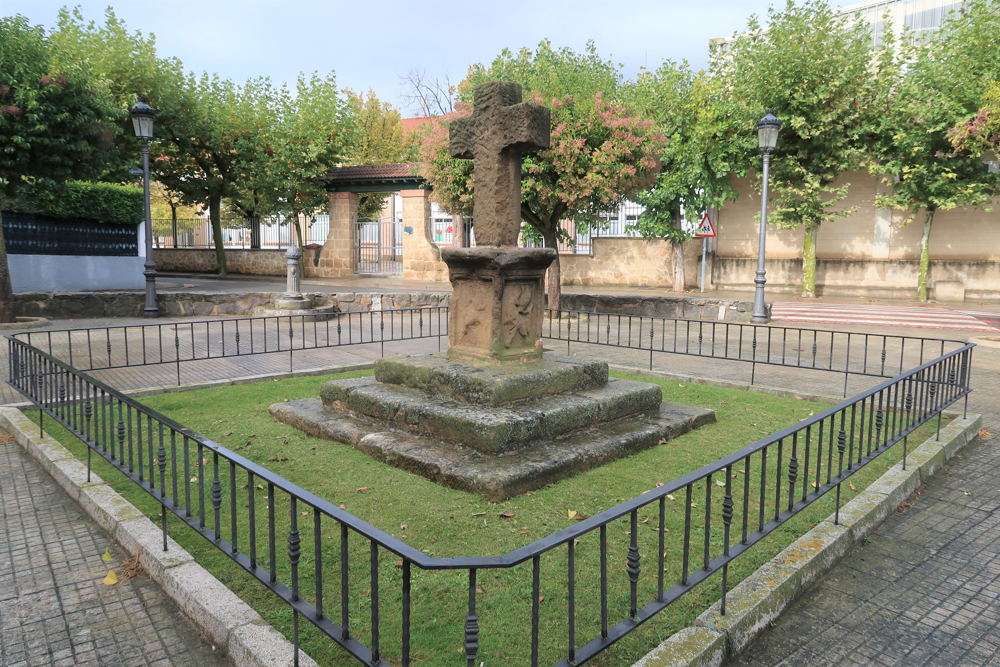You are here
Pillory and Cross
The Pillory
The Pillory was located in the area known as "El Rollo". It is the highest part of the town; this is due to the fact that this column represents the power enjoyed by the town of Elciego to exercise social and civil justice when independence from Laguardia was achieved in the 16th century. Along with independence, Felipe II allowed Elciego to count on a pillory, gallows and stocks as signs of authority of the towns of the time.
The justice column is cylindrical and, as is common, rounded off with a truncated cone.
Cross
A few details are necessary before explaining about this square:
1.- The current location of what is today known as "El Crucero" (The Cross), known formally as "Crucifijo" (Crucifix), is not the original location since the crucifix was found at the crossroads between Villabuena, Navaridas and Laguardia.
2.- The location of the crucifix does not correspond to the existence of a crossroads but rather the existence of a Calvary in which the cross formed part of the Villabuena road.
3.- Along the Villabuena road there is another component of this Calvary which is in a poor state; it could be a small funerary chapel located between the fourteenth and final cross of the Stations of the Cross and used for praying, known in Elciego as "the Bones of Jesus Christ". It is a solid stonework construction which is in somewhat of a poor state, measuring 3.36 x 1.54 y 1.82 m high and crowned by a roof in the shape of an inverted trough. With regards to its exterior decoration, only a few small alcoves, flanked by two circular orifices on all sides, remain, the functions of which are unknown. It has been refurbished and transferred to the gardens close to the cemetery, given its funerary nature.
Plaza del Crucero
The pedestal which supports the Crucifix is located on three stone steps in the centre of Plaza del Crucero, although the current cross dates back to the Republic, when the original was destroyed. Nowadays the most interesting part is the pedestal, since its four faces show the figures of the evangelists with their representations, although this is now in a very poor state due to the effects of the weather.
The possibility of the reliefs being of Mannerist style was considered, although this cannot be confirmed. In any case, in 1705 there was news of the need to embellish the crucifix.
This square is found in the area where the representative, the Lord Mayor and the parish priest received the churchman with the edicts of the Primate of Spain.






